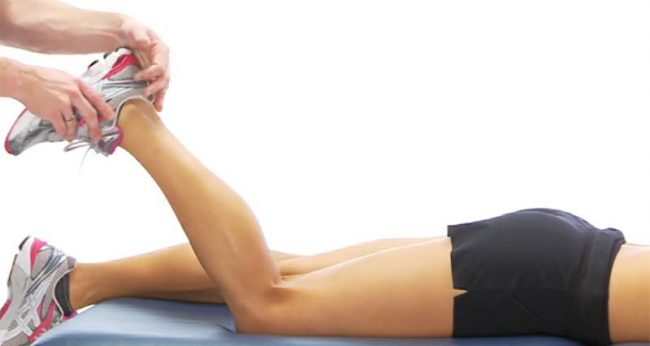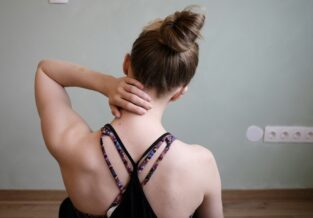Hamstring injuries are not all the same: Specific diagnosis is key
Published on
09 Aug 2019


Written by
Kate Senini
Consultant Physiotherapist
Call us on: (03) 9975 4133
Summarising Kate's article on Hamstring Injury from last week, it is important to understand the specific injury sustained to ascertain a very specific and guided rehabilitation program for each individual patient. Ignoring hamstring injuries, or poor specific diagnosis, has been show to significantly increase the rate of recurrent injury.
This will have repercussions for all you runners, footy players, or parents trying to win the Parents Egg and Spoon Race. Its time to listen up, be educated, and be respectful of such an important muscle group!
The Hamstring muscles comprise two different types of soft tissues – muscle and tendon. Each tissue comprises different proportions of collagen and elastin which means they differ in their capacity to stretch, and they respond differently to load or force. Muscle has a lot more elasticity thus better able to stretch. Tendon has a higher proportion of collagen which makes it stiffer and less elastic but able to absorb forces.
Because of the difference in their physiological make up, muscle and tendon respond differently to healing. This includes the time needed to offload and allow tissue repair to occur, then the time frames and types of exercise prescribed. This then leads into graduated sports specific activity to gradually reload the tissue to a normal volume, and finally return to previous level of activity within a safe tissue recovery process.
It is the interaction of muscle and tendon that adds to the complexity of the Hamstring muscle group. It is possible to injure either the muscle, or the tendon. To the lay-person the differences between which tissue have been affected would be unknown. To the health professional this is an important distinction in correct management of a patient or athlete.
What are some key differences in Symptoms between a Muscle and a Tendon Tear in hamstrings?
A muscle tear is described as an acute sudden pain at the time of injury, that is very localised. It causes a sharp focal pain when touched, stretched, or contracted. These symptoms last a few days before they start to dissipate and can be painful to weight bear, walk with a normal gait pattern, and stretch out the knee or hip during that initial period. These injuries typically become relatively pain free on clinical examination within a few days.
A tendon tear is often described as a localised cramping sensation which seems to be short lasting, and often is described as a “trivial” incident. They most often occur during a sudden explosive burst of speed at 70-80% of maximum when a very quick contraction then stretch of the tendon occurs. These injuries are very tender to push on the tendon running down the centre of the hamstring during clinical examination, and cause a cramping sensation on strength testing or when contracting the muscle during activity or gait. There is a restriction to stretch. These injuries tend to remain more painful on clinical testing for up to weeks after the injury.
What are some key factors in muscle vs tendon injury?
The tendon injury can often occur when the intensity of activity exceeds the strength of the hamstring muscles. When the forces go beyond the strength or length capacity of the muscle, an increased load force is transmitted through the tendon which leads to a tear in the tendon. The tear across the tendon causes the tendon to lengthen as it runs longitudinally through the muscle, and the muscle fibres around it shorten in response. This in effect pulls the tendon further apart which makes it difficult for the tendon tissue to heal back together. During this phase there is between a 20-80% loss in strength in the hamstring group. When these tears are not correctly managed or rehabilitated a patient will often describe recurrent injuries that always occur when they reach a certain speed or intense burst of running or when they reintegrate kicking.
The muscle tear will impact activity depending on which of the three muscles are injured. This is due to their location on theinner, middle, or outer part of the back of the thigh. The upper portion of the outer muscle (biceps femoris) affects hip mobility, whilst the lower portion affects the knee. The position and force through the back of the knee as we go to push off when walking is controlled by the more mid portion (semi tendinosis). Thus the location of the injury will determine the effects on function, as well as how the correct rehabilitation is structured.
What are some key factors in hamstring rehabilitation?
As a Physiotherapist we need to consider the type of tissue involved.
l1. Is it muscular or tendon?
2. What is the location of the tear? Is it higher (closer to the hip) or lower (closer to the knee)?
3. Is it in the inside or outside of the muscle group?
4. And how severe do we believe the tear to be based on the history provided and tests performed?
5. What is the sport or activity of the patient or athlete? What are their daily activities?
6. Factors such as previous injury, lifestyle factors, and other activity outside of sporting goals need to be addressed and factored into the plan.
The answers to these questions will guide the planning and implementation of a patient specific hamstring rehabilitation program.
Considerations in creating a rehab plan include:
1. The degree and timeframes of any offload,
2. Mobility and level load in a rehab program depending on the tissue involved. Slow controlled load versus fast paced exercises need to be gradually introduced. Gym based strength work versus functional based activity is considered. Commencing a load program away from the tear at the opposite end (ie addressing the hip component if the tear is near the knee) is considered.
3. The activity specific direction of movement and addition of rotational vs straight line movements. Exercises addressing the force of impact with the ground, and gravity are also factored in.
4. The types of specific functional exercises required to address the particular loads that go through the specific site of injury. And the function of the hip, pelvis, knee, and ankle that may have contributed to sustaining the hamstring injury in the first instance.
Whilst there are definite rehabilitation components, the specific program for each athlete or patient must be tailored to their specific injury and created with their goals at the forefront. As we can see there are a number of different but equally important components to a solid rehab plan!
Tendon rehabilitation is not easily predictable, as it is affected by the forces going through the adjoining hamstring muscles. Its healing time frames are much slower and can at times take more than 10 weeks. These injuries need to be immobilised for the initial period of up to two weeks, where as a muscle tear can start loading after a few days. The type of rapid forces versus slow loaded movements will play a role in recurrence once higher intensity sport has recommenced. And the movement and control around each joint from the other key muscles in the area will dictate the forces placed on the hamstrings.
It is therefore really important that an injury is correctly and thoroughly assessed and diagnosed, that the appropriate early stage management is put into place, and that a longer term specific and time appropriate rehabilitation program is put into place to ensure that the injury is allowed to heal properly and recurrence is avoided as much as possible.
For a thorough assessment and diagnosis, with up to date research and evidence to back our clinical reasoning and rehabilitation plans, contact Pure Physio today.
About the Author
Kate Senini — Consultant Physiotherapist
Kate, who was a founding partner at Pure Physio in 2010, is now working exclusively in a clinical role. Helping people recover from injury and prevent future injuries has always been her true passion!


